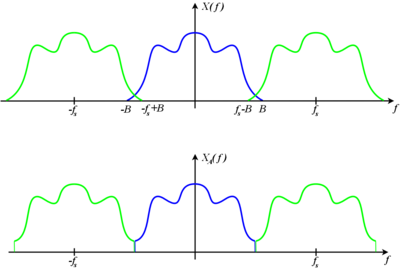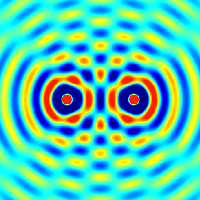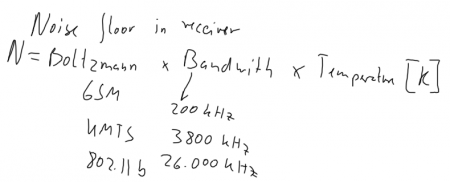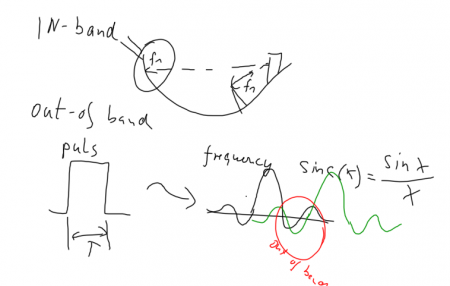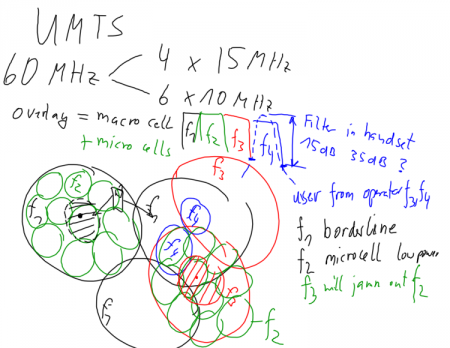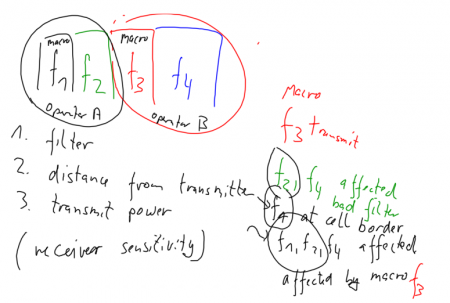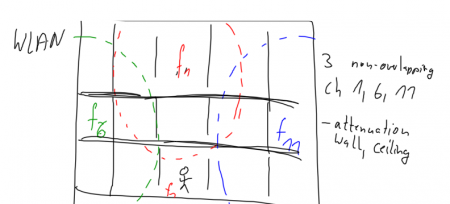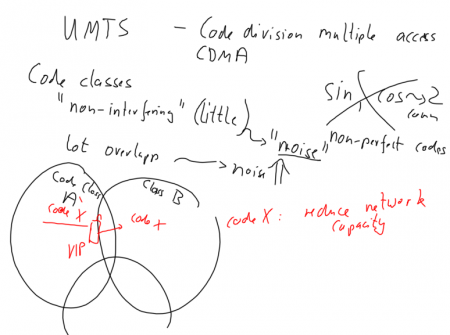A3-Digital Communication principles
| Wiki for ITS | ||||||
|---|---|---|---|---|---|---|
|
Contents
⌘ A3-Digital Communication Principles
⌘ Chapter A3 - Digital Communication Principles
- radio wave propagation
- Electromagnetic signals
- Nyquist Theorem
- Signal/noise ratio
A4-Signal Strength and Capacity
- Shannon Theorem
- Signal strength
⌘ Nyquist Theorem
- Shannon: If a function
contains no frequencies higher than
[cycles/s], it is completely determinded by giving its ordinates at serires of points spaced
seconds apart
- band-limitation versus time-limitation
- Fourier transform
[source: Shannon, 1948]
⌘ Hartley's law
- The amount of information that may be transmitted over a system is proportional to the bandwidth of that system.
- where m is the “number of current values”, which in modern terms would be called “the size of the signalling alphabet”
Why did it take twenty years to fill the gap between Hartley’s law and Shannon’s formula? The only necessary step was to substitute 1+C/N for m in Hartley's law. Why, all of a sudden, did three or more people independently “see the light” almost at the same time? Why did neither Nyquist, nor Hartley or Küpfmüller realize that noise, or more precisely the signal-to-noise ratio play as significant a role for the information transfer capacity of a system as does the bandwidth?
[source: L. Lundheim, Telektronikk 2002]
⌘ Electromagnetic channel
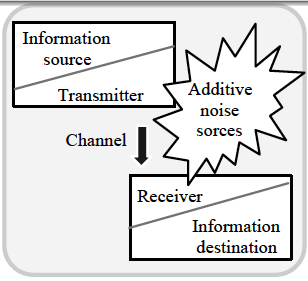
|
The radio channel is always affected by noise, which restricts the information flow to the receiver
[Source:Neelakanta et. al., Fig1.2] |
⌘ Sources of noise
* Electronic parts of transmitter and receiver (components)
|
Radio
- In-band interference
- out-of band interference, e.g. GSM/NMT interference
- radio channel, e.g. scattering, multi-path
[Source:Wikipedia, "interference"]
- further explanations: Telektronikk 4/95, Rækken and Løvnes, Multipath propagation
⌘ Signal/noise ratio
,
where P is average power
- why talking about noise?
- dB,
- near-far problem
[source: Wikipedia]
Comments
- in-band: a source having the same signal
- out-of-band: modulations/filters which are not perfect
explain Fourier-transform and overlap
The capacity of a system consists of both the cell capacity (depending mainly on OSI layer 1-3) and on network design, meaning: how much interference do I get from other cells.
In a network where the available 60 MHz in the UMTS band are distributed to 6 operators, each operator will only have 2x 10 MHz available for operation, which typically means that one frequency block (5MHz) will be used for micro-cells and the other frequency block (5 Unik/MHz) will be used for macro-cells.
The amount of interference will depend on
- the filter characteristics of the handset ( check separation)
- the distance from the transmitter
- the transmit power
Receiver sensitivity might play a role, but is considered as being constant in the selected frequency band.
802.11b has only three non-overlapping channels, ch 1, 6, and 11. In a normal business building radio waves will propagate not only along one floor, but also through the roof/floor. The visibility of WLAN will make it necessary to plan the frequencies in order to support the person on the ground floor with wireless access.
In UMTS coverage and capacity can be adopted not only through the power level of the transmitting unit, but also through the selection of codes. If the same code or code-class is selected in neighbouring cells, a simultaneous connection to the mobile phone can be achieved. This will increase the coverage (why?) but decrease the total capacity of the system (why?)

